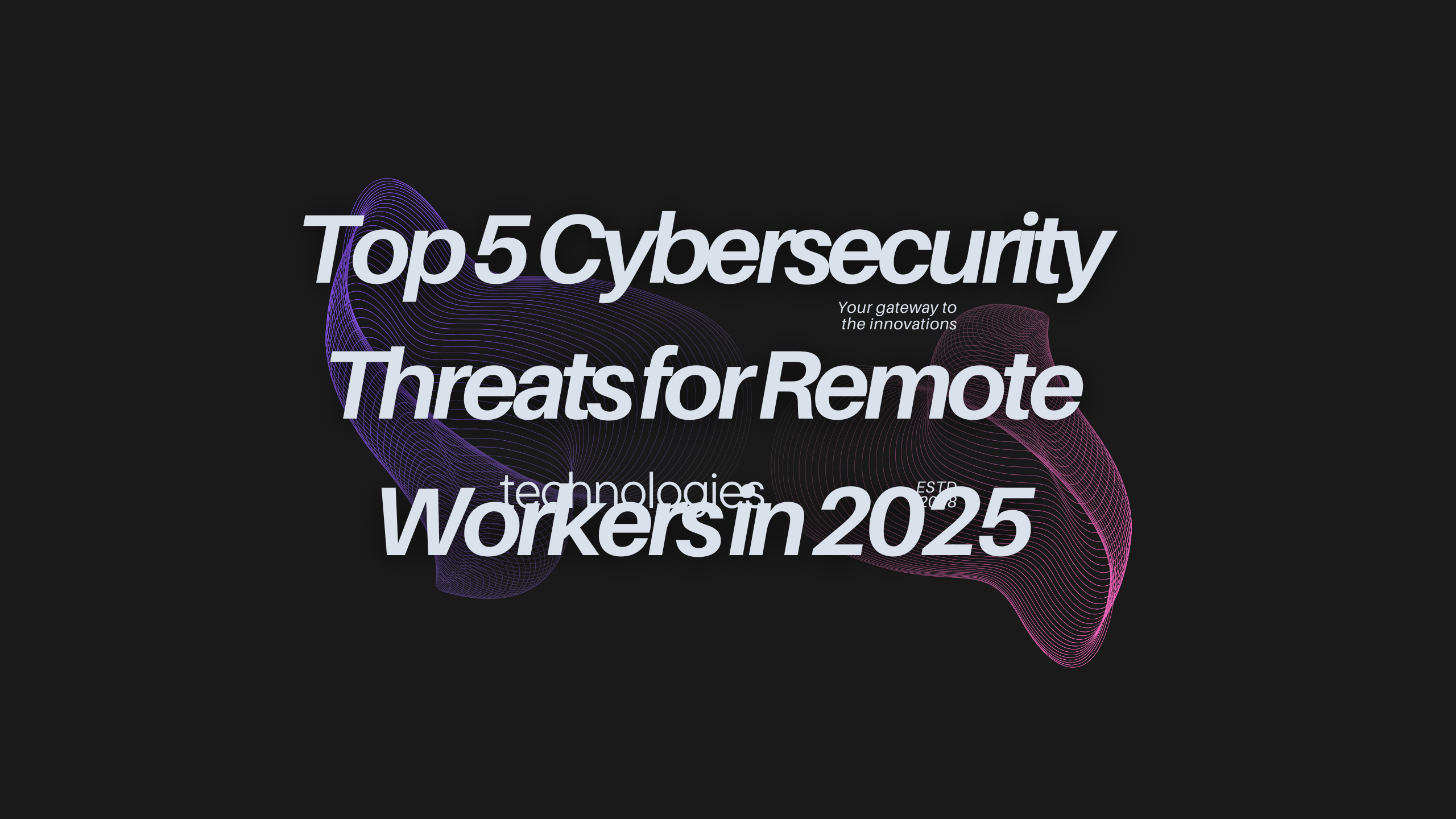Top 5 Cybersecurity Threats for Remote Workers in 2025 Remote work is here to stay—and so are the cybersecurity challenges that come with it. As more professionals work from home or travel while connected to public networks, new threats continue to emerge. If you’re working remotely in 2025, here’s what you need to watch out for.
1. Phishing Attacks That Target Remote Tools
Cybercriminals now craft phishing emails that mimic legitimate communication from platforms like Zoom, Slack, or Google Workspace. One wrong click could expose sensitive data or infect your device with malware.
Tip: Always verify email addresses and URLs. Hover over links before clicking, and never download unknown attachments.
2. Unsecured Home Wi-Fi Networks
Unlike office networks, home Wi-Fi often lacks enterprise-grade firewalls. Hackers can exploit weak or outdated routers to access devices.
Tip: Change the default router password, use WPA3 encryption, and regularly update firmware.
3. Shadow IT and Unapproved Apps
When employees use personal devices or download software without IT approval, it creates a “shadow IT” problem—exposing the company to potential breaches.
Tip: Stick to approved apps and notify your IT team if you need new tools.
4. Inadequate Endpoint Security
Remote workers often use multiple devices (laptops, phones, tablets) for work. Without proper antivirus and security settings, these endpoints are vulnerable entry points.
Tip: Install trusted antivirus programs and enable firewall protection on all work devices.
5. Cloud Misconfigurations
Many remote teams rely on cloud platforms like AWS, Microsoft 365, or Dropbox. A small misconfiguration can accidentally expose sensitive company data to the public.
Tip: Use role-based access controls and audit cloud settings regularly.
Final Thoughts
The freedom of remote work shouldn’t come at the cost of your digital security. By staying aware of emerging threats and following best practices, you can keep your work (and your data) safe in 2025 and beyond.
Stay vigilant, stay updated, and stay secure—no matter where you work.
Title: How to Spot a Phishing Email Before It’s Too Late
Phishing emails are one of the oldest tricks in the cybercriminal playbook—and they’re still dangerously effective. These deceptive messages are designed to steal your passwords, financial data, or even install malware on your devices. Knowing how to identify them is a vital skill in today’s digital world.
What Is a Phishing Email?
A phishing email pretends to be from a trusted source—like your bank, a delivery service, or even your boss—but is actually a scam. These emails usually contain links to fake websites or attachments infected with malicious software.
6 Red Flags to Watch For
- Urgent or Scary Language
Messages claiming “Your account will be closed” or “Suspicious activity detected” often aim to spark panic. - Unusual Sender Address
Look closely—“support@paypal-secure.com” isn’t the same as “support@paypal.com.” - Grammar and Spelling Mistakes
Many phishing emails come from non-native speakers and contain awkward phrases or typos. - Strange Links or Attachments
Hover over links without clicking to preview where they lead. Don’t open random attachments. - Requests for Personal Information
Legitimate companies will never ask for passwords or Social Security numbers via email. - Generic Greetings
“Dear Customer” is a red flag. Real companies often use your actual name.
What to Do If You Suspect a Phishing Email
- Don’t Click Anything
- Don’t Reply to the Email
- Report It to Your IT Team or Email Provider
- Delete It Immediately
If you’ve already clicked a link or entered information:
- Change your password right away
- Enable two-factor authentication (2FA)
- Scan your system with antivirus software
Final Thoughts
Phishing emails are evolving, but so are our defenses. With awareness and smart habits, you can outsmart even the most convincing scams. Teach your team, your family, and yourself to think before clicking.
Stay alert. Stay informed. Don’t take the bait.
